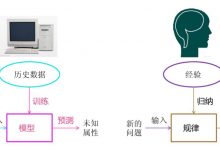误用检测
重点 (Top highlight)
As a technical founder, I’ve both built and managed the direction of ML in startups.
作为技术创始人,我已经建立和管理了初创企业中ML的方向。
I’ve also made a lot of mistakes.
我也犯了很多错误。
Many stem from treating ML as if it were software development. Others from the unstructured nature of the startup itself.
许多源于将ML视为软件开发。 其他来自创业公司本身的非结构化性质。
Here are a few of my learnings.
这是我的一些经验教训。
不要建立AI创业公司(如果可以帮助的话) (Don’t build an AI startup (if you can help it))
Don’t make AI your core product. Instead, complement an existing product with AI.
不要将AI当作核心产品。 相反,用AI补充现有产品。
Solve a problem with software or hardware, sell that, then augment it later with AI. Or if you’re an AI expert, join an existing startup as a late stage cofounder.
解决软件或硬件问题,将其出售,然后再通过AI加以解决。 或者,如果您是AI专家,请以后期联合创始人的身份加入现有的初创公司。
This way, you’re already sitting on data, and have room to experiment.
这样,您已经坐在数据上,并有实验的空间。
It’s easier for Audi to start working on self driving cars than for a room of AI PhDs. The latter needs to acquire proprietary data, and make industry connections before even beginning.
对于奥迪开始从事自动驾驶汽车的工作要比在一间AI博士的工作要容易得多。 后者需要获取专有数据,并在开始之前就建立行业联系。
Machine learning is best focused on marginal improvements. That means, going from 100% to 110%.
机器学习最好集中在边际改进上。 也就是说,从100%上升到110%。
从自动化简单的东西开始 (Start with automating the easy stuff)
Building competency in AI+domain takes time, no matter how much previous experience you have.
无论您以前有多少经验,在AI +域中建立能力都需要时间。
Classifying dog breeds in a Kaggle competition (where you’re given classes in advance), doesn’t necessarily transfer to a real domain where you need to come up with classes yourself.
在Kaggle竞赛中对狗的品种进行分类(您需要事先给他们上课),并不一定会转移到需要自己提出课程的真实领域。
A good strategy is to find repetitive decisions that team members are already making, and try to automate those. Processes with existing SOPs are ideal.
一个好的策略是找到团队成员已经做出的重复性决策,并尝试使这些决策自动化。 具有现有SOP的过程是理想的。
Build up competence before solving the game changing problems. Anecdotally, if it’s hard for a human to ingest information and make a decision, it will be near impossible for an AI to do it.
在解决游戏规则改变问题之前建立能力。 有趣的是,如果人类很难吸收信息并做出决定,那么AI几乎不可能做到这一点。
AI是自动化,而不是魔术 (AI is automation, not magic)
Don’t expect to throw data at a neural network and have solutions come out the other side. This doesn’t happen outside large companies’ press releases.
不要期望将数据丢到神经网络上,而让解决方案出现在另一端。 在大公司的新闻稿之外不会发生这种情况。
Often there is a huge component of software engineering integrated with the AI, stacked over multiple layers, even if it looks simple from the outside.
通常,与AI集成在一起的软件工程中,有一个巨大的组成部分,即使从外观上看起来很简单,也可以多层堆叠。
Use AI to solve small narrow problems and stack these together in combination with domain knowledge.
使用AI解决狭小的问题并将其与领域知识结合在一起。
Deep learning rarely generates miracles, but incremental improvements over time can.
深度学习很少会产生奇迹,但是随着时间的推移会逐渐增加。
训练自己的模型 (Train your own models)
Your data is your moat. You worked hard to collect it.
您的数据就是您的护城河。 您努力收集它。
Train your models in house rather than feeding data to an AI service from one of the large cloud providers.
在内部训练模型,而不是将数据从大型云提供商之一提供给AI服务。
They’re more than happy to transfer learnings from it to any other paying competitor. That’s not what you want.
他们非常乐意将学习的知识转移到其他任何付费竞争对手。 那不是你想要的。
For very marginal improvements outside your core product, the risk can be worth it. But as a general rule, don’t let anyone near your data.
对于核心产品之外的微小改进,风险是值得的。 但一般而言,请勿让任何人靠近您的数据。
Most of the time, this is not that difficult.
大多数时候,这并不困难。
人工智能不是目标,为有钱人解决问题是目标 (AI is not the goal, solving a problem for people with money is the goal)
We’re past the point where mentioning “AI” gets you extra points with customers. There’s been too much hype.
提到“ AI”可以为您带来更多与客户的加分,这已经过去了。 炒作太多了。
Everyone is pretending to use AI nowadays. So focus more on solving your customers’ problems than projecting cool tech.
如今,每个人都在假装使用AI。 因此,与设计出色的技术相比,更多地专注于解决客户的问题。
If they ask about the AI, great. Otherwise, take their money and solve their problem.
如果他们问起AI,那就太好了。 否则,拿走他们的钱,解决他们的问题。
They’ll be equally happy however it was accomplished.
他们一定会很高兴,但是一切都完成了。
总结所有的成功和失败 (Debrief all success and failures)
After an experiment, always writeup what was tried and the results. This includes wild successes and complete failures.
经过实验后,请务必写下尝试过的内容和结果。 这包括疯狂的成功和彻底的失败。
Staff will come and go and brains will forget. Knowledge is difficult enough to transfer with good documentation.
工作人员会来去去去,大脑会忘记。 好的文献很难传递知识。
So if you’ve spent days, weeks or months on a project. Write it down and hold onto that knowledge.
因此,如果您在项目上花费了数天,数周或数月。 写下来,并坚持该知识。
结论 (Conclusion)
My experience only applies to early stage startups, where we’ve had the ability to pivot on a dime, and don’t need to convince a hundred stakeholders to try something.
我的经验仅适用于早期创业公司,在这些初创公司中,我们有能力依靠一角钱,无需说服数百名利益相关者来尝试。
I can only surmise that there are a lot more rules of thumb to follow if inside a larger organization.
我只能推测,如果在较大的组织内部,还有很多经验法则可以遵循。
If you have experience with that, I’d love to hear about it in the comments.
如果您有经验,我很乐意在评论中听到。
翻译自: 人工智能/
 爱站程序员基地
爱站程序员基地
![[翻译] Backpressure explained — the resisted flow of data through software-爱站程序员基地](https://aiznh.com/wp-content/uploads/2021/05/5-220x150.jpeg)

